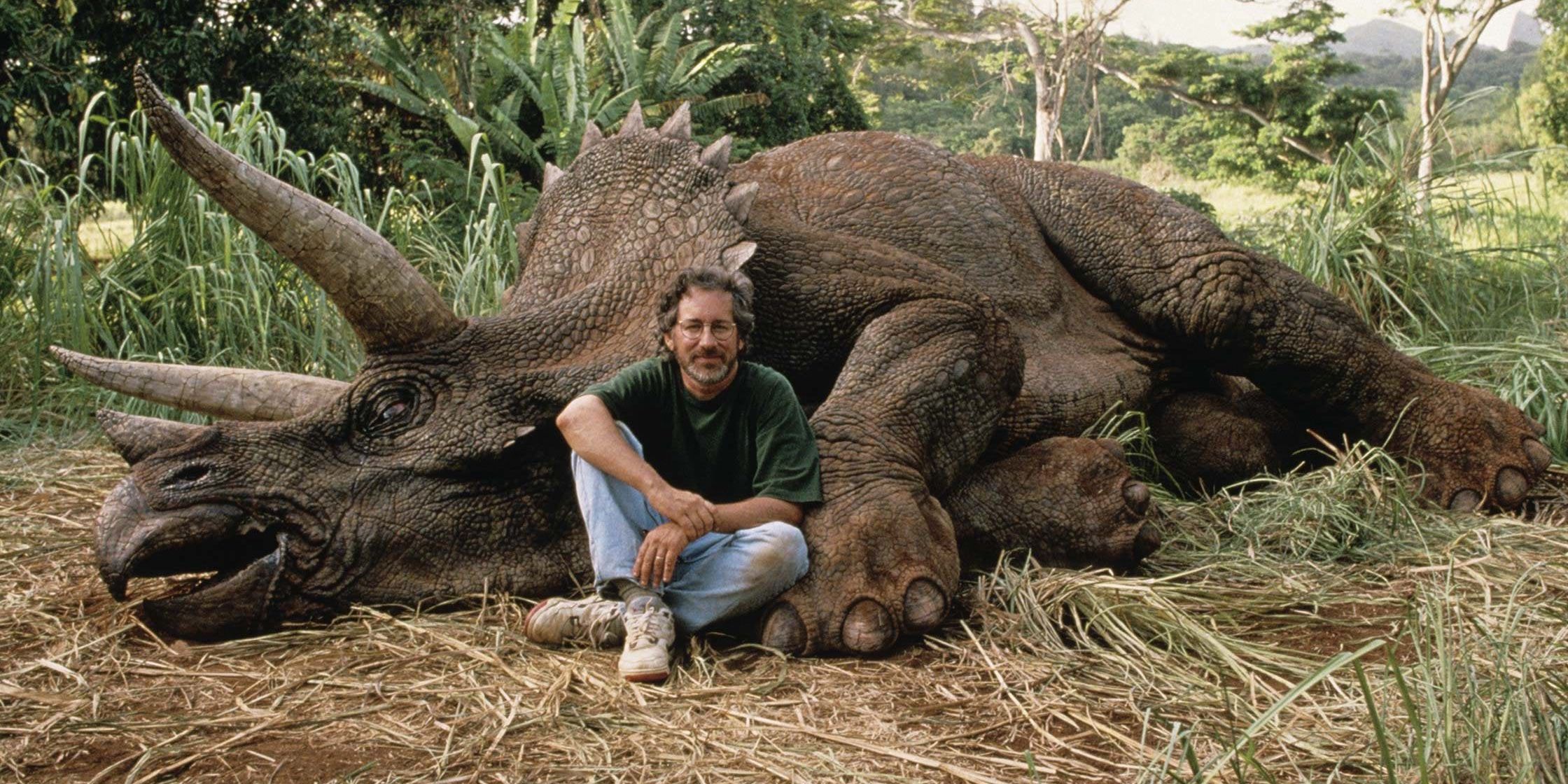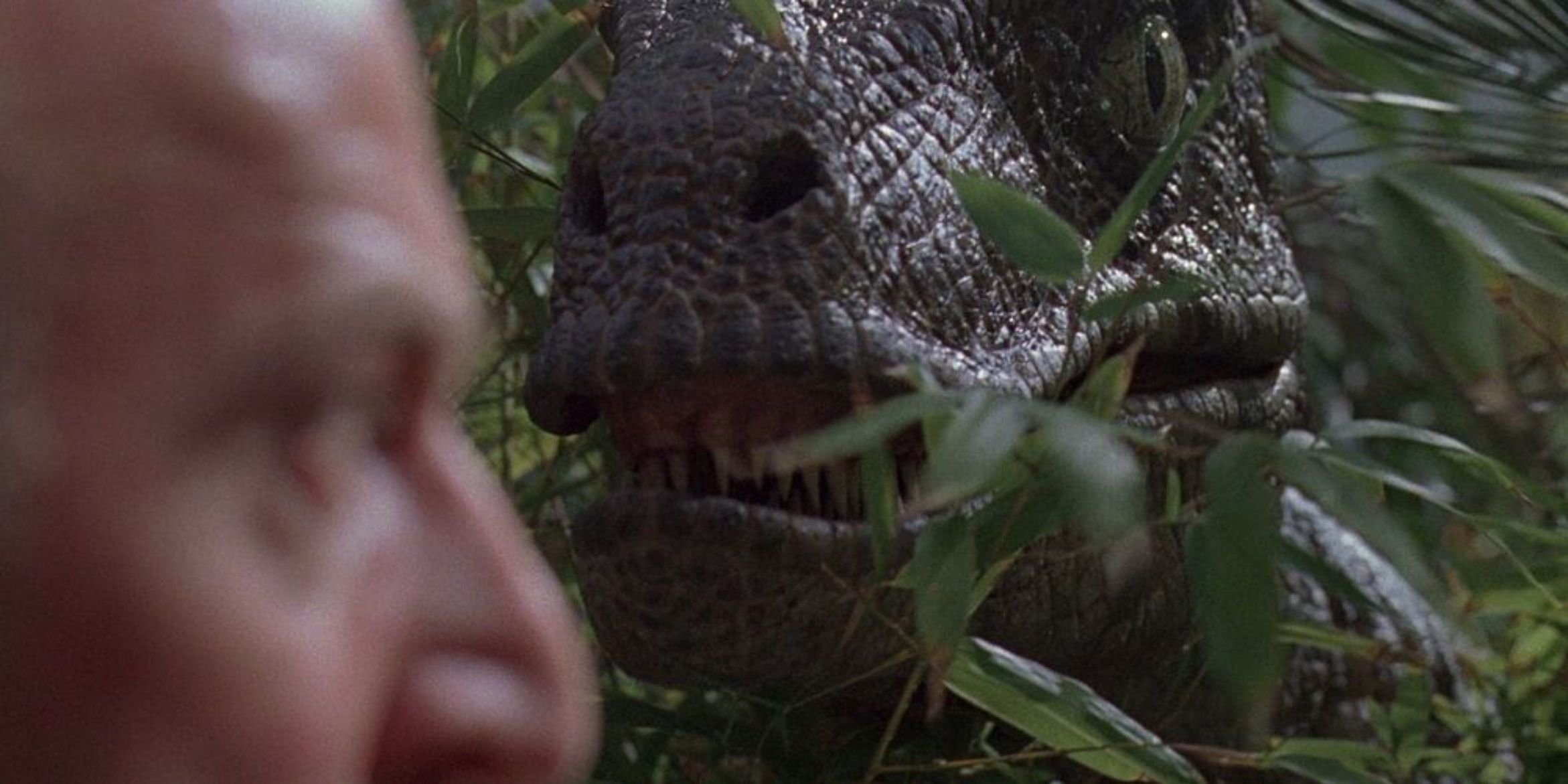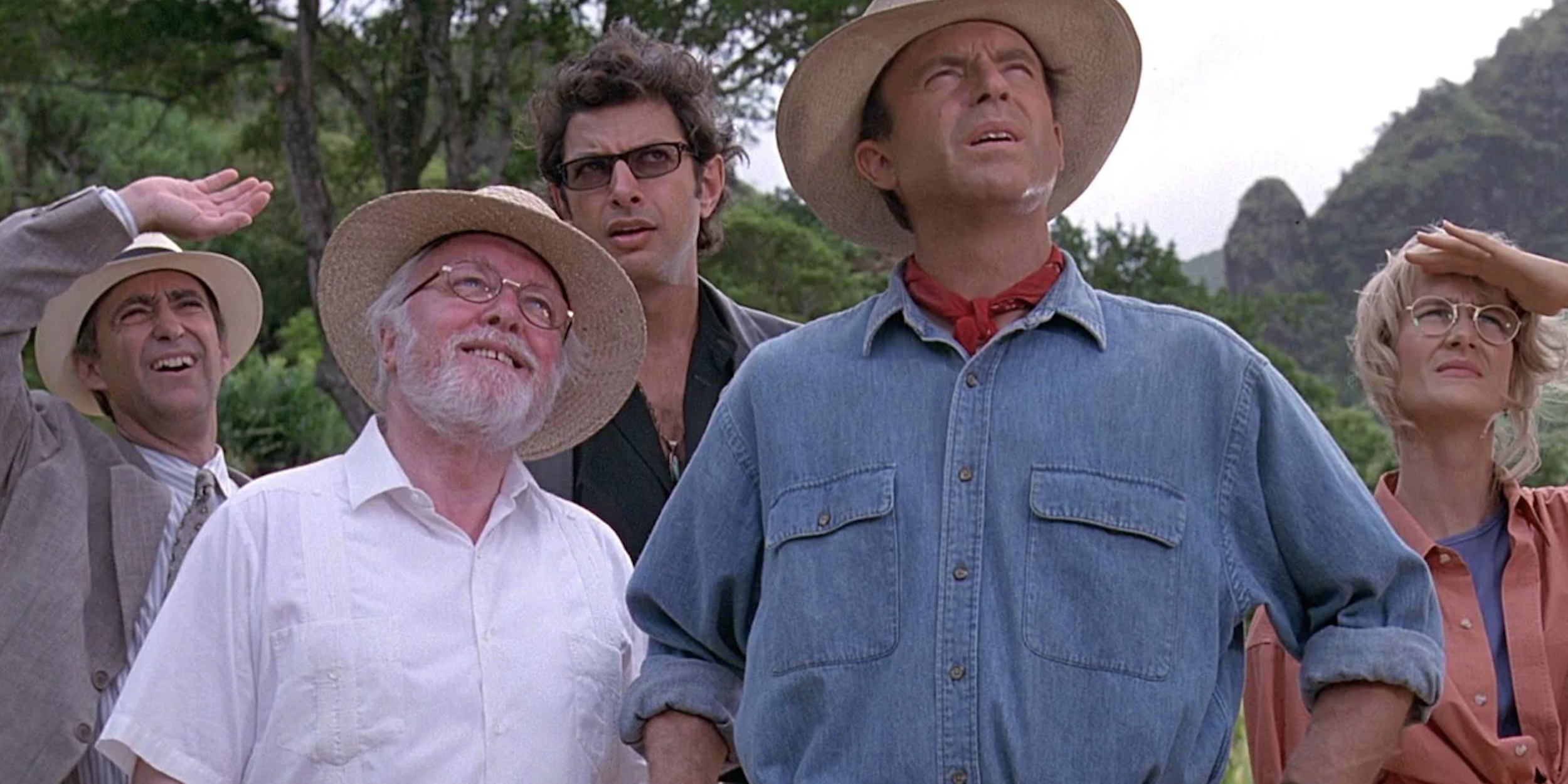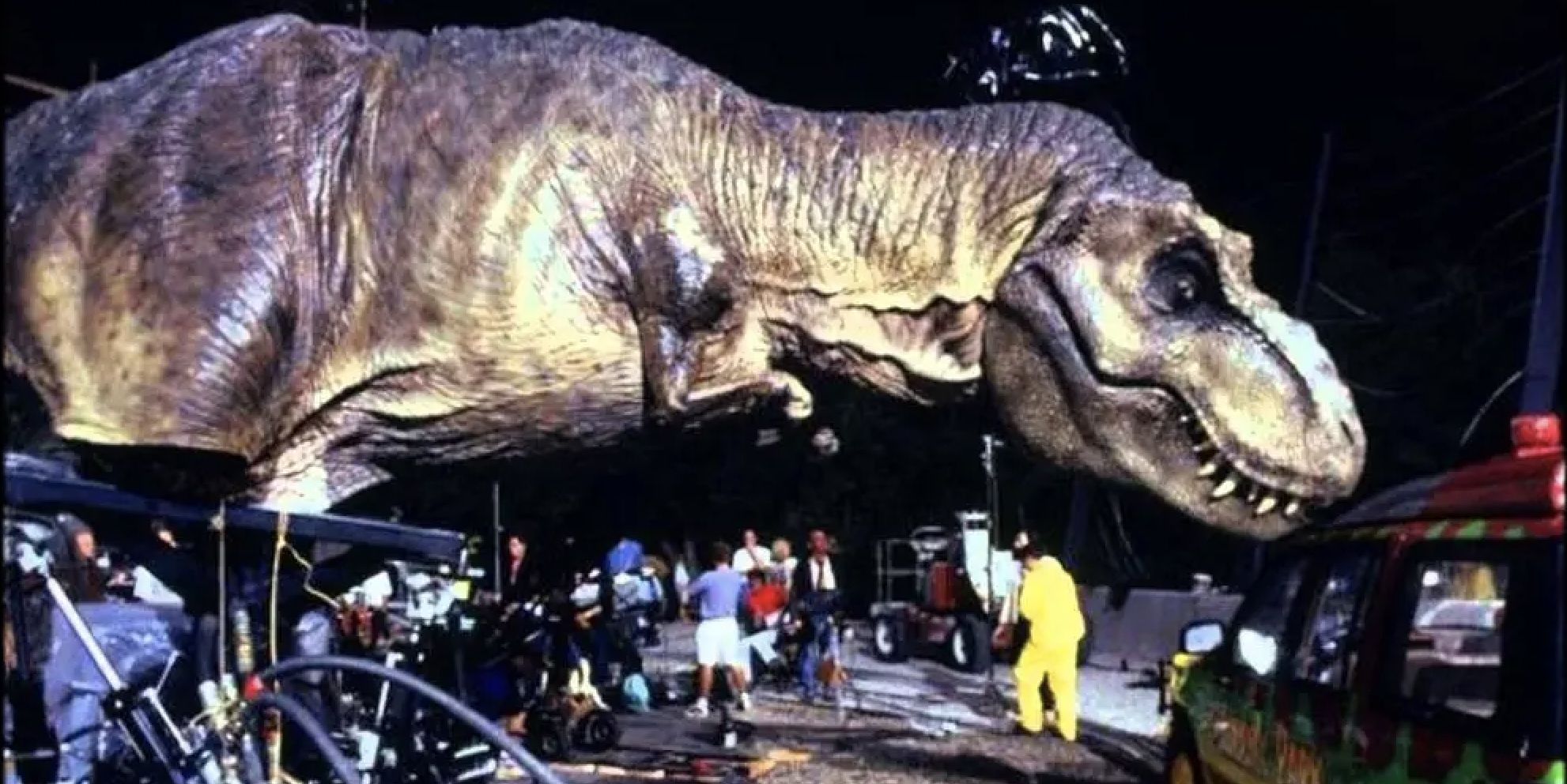After two successful box-office sequels that sought to propel the franchise in a fresh direction, the upcoming Jurassic World: Dominion, the third installment in the Jurassic World sequel trilogy, looks to conclude the entire dino franchise on a high note. While the newer additions have contained a variety of characters, thrilling sequences, and plenty of more dinos, the sequel trilogy has become a bit divisive among fans. Much of that is due to legendary filmmaker Steven Spielberg's absence in the director's chair.
The award-winning filmmaker who started it all with his unique vision in 1993, Jurassic Park's high expectations have made it difficult for future installments to top. From the groundbreaking special effects that seamlessly blend CGI with animatronics to the exciting and thrilling sequences that take their time to make any sort of impact, Jurassic Park instantly became a culturally significant film that is still regarded to this day as one of the greatest thrillers of all time. Even Spielberg's 1997's The Lost World: Jurassic Park, while nowhere near as compelling as its predecessor, still manages to contain several tense sequences filled with dazzling FX. After Spielberg's directing departure from the later sequels, it became very clear that his style and overall involvement was crucial for the franchise's success.
Taking his time
Much like his 1975 classic Jaws, a huge part of what made Spielberg's original so thrilling is that he doesn't unveil the terrifying dinos running rampant until almost halfway through the film's runtime, an aspect that is missing in the sequel trilogy. Jaws would nowhere near carry the same impact if the entire shark was revealed in the opening sequence.
Instead, Spielberg in that film creates tension by only revealing other characters' reactions to when an attack occurs, building a sense of anxiousness as the film progresses. He gradually unveils more and more up to the final showdown, making it that much more frightening of what has been lurking in the water the whole time. Spielberg's keen eye for thrills is replicated over to Jurassic Park. There are quick glimpses of eyes, tails, or claws, but nothing is shown until the T-Rex steps out of its paddock to wreak havoc.
Writing Compelling Characters
While a few of the new additions to the franchise have their moments here and there, they are nowhere near as engaging as the original trio. Characters like Owen Grady and Claire Dearing do not carry that same weight or have the same emotional impact that characters like Alan Grant, Ellie Sattler, and Ian Malcolm have. Part of what made Jurassic Park so entertaining and engaging other than the variety of dinosaurs were the well-written characters with compelling arcs that feel believable and honest.
Spielberg, similar to pretty much the rest of his filmography, relies heavily on making the audience deeply invested in the characters involved and any dynamics they share between one another (whether that includes themes centering on family dynamics and the ways they become divided or united). Spielberg's magic touch and knowing what to focus each frame on is an element that the Jurassic World movies could use, so with the original three making a return in Jurassic World: Dominion, the franchise finale may just be saved.
Seamless Blend of CGI and Animatronics
Maybe the most noticeable aspect in the Jurassic World films is the heavy use of CGI over practicality. While obviously the technology in 1993 was nowhere near advanced as it is today, the visual effects still hold up great to today's standards, and much of that comes down to Spielberg creating a seamless blend of practical and cgi. Instead of overusing one or the other, he understands when and where to use VFX or practical in order to best reel in audiences further into the story (but still leaning towards the classic animatronics). When the life-sized animatronic T-Rex attacks the SUV with the kids trapped inside, having that physical, tangible dino that stands 40 feet tall makes the scene that much more terrifying. Audiences, most times, know when they see CGI and the overabundance of it can easily take them out of a story.
While efficient as well as having come a long way, the Jurassic World sequels' CGI can feel like too much. While there are some intense scenes, they are nowhere near as impactful or engaging due to the overuse of CGI. Audiences, most times, know when they see CGI and the overabundance of it can easily take them out of a story.
While this is said to the closing film for the entire franchise, nothing can be ruled out today. Spielberg making a return in a Jurassic film as a director may just be something that audiences should look out for, but for now, let's just hope that Trevorrow's Jurassic World: Dominion is the worthy conclusion fans have been hoping for.




